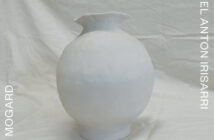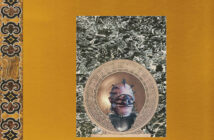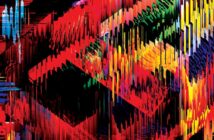
Anders Koppel: String Quartets and Mezzo Soprano Quintet (DaCapo)
Anders Koppel: Concertos (DaCapo)
Rued Langgard: Piano Works 2 (DaCapo)
Svend Erik Tarp: Piano Works (DaCapo)
Paul Brunn: Letters to the Ocean (DaCapo)
Gudmundsen-Holmgreen, Eichberg: Distant Still – Trios for violin, horn and piano (DaCapo)
DaCapo Records, “the leading label for Danish classical music”, was founded in 1989, its early releases resembling unattractive over-priced Naxos CDs. Now it offers a greater focus on contemporary music, luminously performed and recorded, and the packaging is first rate, including intelligent and revealing liner notes from Danish academics and journalists. This latter feature is important, who else to turn to for information on the music of Pelle Gudmundsen-Holmgreen or Svend Erik Tarp?
Starting with Koppel, we have two releases: the first featuring his son Benjamin on mezzo-saxophone, a custom built instrument pitched between soprano and alto, performing the Mezzo Saxophone Quintet . Koppel is described as the quintessential “composer of our time”, inspired equally by rock, jazz, world and classical traditions, “fusion” tags which usually have me running, but he sounds post-serialist & post-minimalist to my ears. Unlike the bulk of what’s on offer here, Koppel is unafraid of overt tonality, recalling Bernstein and Gershwin, particularly in the Saxophone Quintet, Benjamin’s mezzo sounding clarinet-like in parts. The string quartets are more eclectic still, incorporating Tango, Klezmer and a loping jazz swing in the First, while the second is more open-ended and questing, reflecting the composer’s interests in star constellations.
Concertos features Koppel’s approach to larger forces and reveals a more diversity set of influences and tonal colours. The Sinfonia Concertante for violin, viola, clarinet, bassoon and orchestra finds Koppel reducing the groups size to focus on solos, dialogues and closer relationships, sketched in novel neoclassical language and powered by pulses from the timpani. The Concerto for flute, harp and orchestra pits these airy solo instruments against equally lightweight tings from triangle, wind chimes and orchestral bells, creating a wispy and impressionistic soundworld. Altogether different is Koppel’s Concerto for Tuba and Orchestra, featuring larger forces and juxtaposing brash brassy blasts with moments of light comedy. March rhythms offset fluid swathes of sound in which strings and horns are entwined and exposed.
The piano works of Rued Langgaard (1893-1952) reflect an earlier period in Danish music history, capturing compositions from throughout the prolific composer’s life. Album Leaf comes from his childhood and is dainty yet surprisingly pensive, while Piano Piece, E major, his last work for the instrument, and is serene and subdued, almost functioning as a summation. Elsewhere there is the bleak and gothic Music of the Abyss, inspired by Catholicism, particularly the apocalyptic visions from the Revelation of St John, and figured as an attack at rival composer Carl Nielsen. But the mood for the most part is sunny and light, filled with nostalgia for childhood, best articulated in Summer Holiday in Blekinge, its evocations of outdoor pursuits reminiscent of Satie.
Also inspired by French music is the lesser known Svend Erik Tarp, Piano Works focusing on his youthful compositions from the prime of his career (1920-56). The Suite of 1927-29 recalls Grieg’s Lyric pieces, given a more radical harmonic makeover, while the Theme and Variation somehow pits Scarlatti trills with the dynamicsm of Alban Berg’s Sonata. Tarp’s Sonata reveals a more florid engagement with the romantic virtuosic tradition of Rachmaninoff and Liszt, while mercifully trimming the excess. Pianist Tonya Lemoh demonstrates a suitably light touch to grapple with the slipperiest of Tarp’s instructions.
The evocatively titled Letters to the Ocean by Paul Brunn follows the tradition of Debussy’s La Mer, both the title piece and Waves of Reflection exploring the rolling sea in sonic terms. The former blends woodwinds, strings, brass and percussion into gossamer threads of shifting tone, sharp bursts of high notes from violin and flutes depicting the play of light on shifting waves; the latter casts a similar spell with added accordian wheezes. A silver bell that chimes all living things together threads these liquid tones around the voice of mezzo-soprano Helene Gierris, the title coming from the third verse of the poem “Lorca’s House” by Rolf Gjedsted, resulting in a strange melange of Debussy-ian impressionism and Middle-Eastern influence. There’s a degree of jagged structural logic to these works, more like the angularity of Messiaen than the florid Takemitsu, but very much a world of Brunn’s own.
The Danish Horn Trio collection Near Still Distant Still finds the trio tackling Danish responses to the ensemble popularised by Brahms, as viewed by Ligeti. It’s an uncommon grouping of instruments but, as the three composers here demonstrate, one in which a wealth of sound opportunities can be explored. Poul Ruders’ Horn Trio opens slowly, patiently, gusts of brass recalling bands from Northern England, matched with parity worthy of Webern. Pelle Gudmundsen-Holmgreen titular work is more dynamic and condensed, commencing with equal restraint but shifting into higher gears in the second and third movements, matching string glissandi and sputtered gasps of horn with Cecil Taylor-esque chord clusters.
The immediacy of these performances and recordings is at times thrilling, and its an interesting world to explore, a nation as viewed through contemporary classical composers working within chamber music forms. DaCapo’s website is suitably slick and impressive and a good introduction to this music.
www.dacapo-records.dk
Joshua Meggitt



